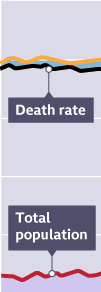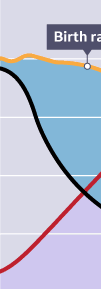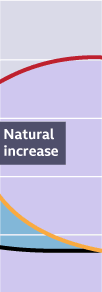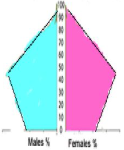Measuring development
1/34
There's no tags or description
Looks like no tags are added yet.
Name | Mastery | Learn | Test | Matching | Spaced |
|---|
No study sessions yet.
35 Terms
development
standard of living and its quality of life of its human inhabitants
standard of living
refers to wealth, comfort, material goods and necessities available to a certain socioeconomic class in a certain place
quality of life
general well-being of individuals and societies, outlining negative and positive features of life
What are some factors that affect our quality of life?
physical health
family
education
employment
wealth
safety
security to freedom
religious beliefs
the environment
newly emerging economies (NEEs)
countries that are experiencing high rates of economic development and rapid industrialisation
factors that affect a country’s development
environmental
earthquakes
economic
trade and debt
social
access to water/education
political
goverment corruption
gross national income (GNI)
total value of goods and services produced by a country
What are the 4 levels of income used by the World Bank?
high, higher, middle, lower middle, low
human development index (HDI)
a measure of a country's overall development, expressed in values 0-1
What are the measures used to produce the HDI of a country?
life expectancy at birth
no. of years of education
GNI per capita
World Happiness Resort
measure of happiness published by U.N Sustainable Development Solutions Network
Demographic Transition Model (DTM)
model that shows the relationship between birth rates and death rates and population

What happens at stage 1 (high fluctuating) of the DTM? Give an example of a country in this stage.
population is low but high birth + death rates
birth + death rates are balanced
indigenous tribes in Amazon, Brazil

What happens at stage 2 (early expanding) of the DTM? Give an example of a country in this stage.
population begins to increase as death rates fall due to improvements in medicine and sanitation
birth rates remain high
Afghanistan

What happens at stage 3 (late expanding) of the DTM? Give an example of a country in this stage.
population still increasing but more slowly as birth rates fall due to increased access to contraception and family planning, improvements to health education and general desire for smaller families
death rates continue to fall but at slower rate than stage 2
Columbia

What happens at stage 4 (early expanding) of the DTM? Give an example of a country in this stage.
population is high but birth rates and death rates are low
rate of population changes steadier than before
U.K

What happens at stage 5 (natural decrease) of the DTM? Give an example of a country in this stage.
population may start to decline due to low birth rates and an ageing poulation leading to slight increase in death rates
Japan
population pyramids
graphs that show the structure of the population a country
What can population pyramids tell us?
birth rate
death rate
life expectancy
levels of economic development
dependency ratio
the proportion of dependents (14 or younger and 65 or older) to people of working age (15-64)
How is the dependency ratio calculated?
adding numbers for both groups then dividing by the number of people aged 15-64 and multiplying by 100
Lower dependency ratio means…
greater number of people who work and are less dependent
Higher dependency ratio means…
greater number of people who are dependent on the working population
Low dependency ratios are most common in…
HICs

What stage of the DTM is this?
stage 1 (high fluctuating)

What stage of the DTM is this?
stage 2 (early expanding)

What stage of the DTM is this?
stage 3 (late expanding)

What stage of the DTM is this?
stage 4 (low fluctuating)

What stage of the DTM is this?
stage 5 (natural decrease)
How is birth rate a reliable indicator of development?
as a country develops, women are more likely to become educated and want a career rather than stay at home therefore have less children
How is death rate a less reliable indicator of development?
developed countries may have an ageing population therefore death rates are higher than a country with a younger population overall
Infant mortality is a useful measure of…
a country’s healthcare system
How is the no. of doctors per 1000 people a useful indicator of development?
can see how much money a country has for medical services + education
How is literacy rate a useful indicator of development?
can be used to assess how good the education system is and whether it is complusory
How is % access to clean water a useful indicator of development?
useful in showing how much infrastructure the country has
e.g. dams, reservoirs and water treatment plants